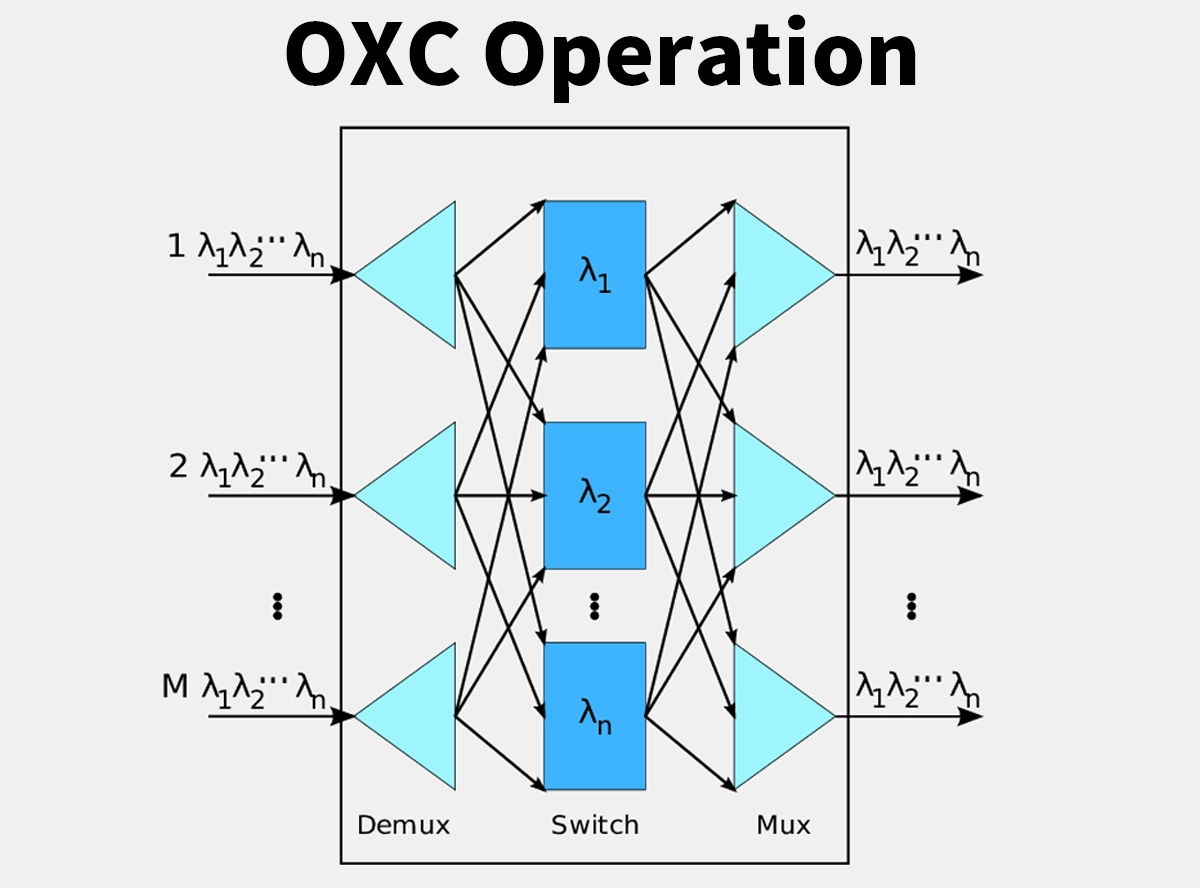
1️⃣ Introduction
In modern optical transport networks, optical cross‑connect (OXC) devices are essential for high-speed, flexible signal routing. An OXC switches optical signals between fiber inputs and outputs without converting them to electrical signals, enabling true all-optical routing. This technology supports scalability, flexibility, and high performance for backbone networks, data‑center interconnects, and next-generation mobile networks.
This article explains OXC fundamentals, benefits, deployment scenarios, and highlights how LINK‑PP optical transceivers integrate seamlessly with OXC infrastructure to optimize network performance.
2️⃣ What Is an Optical Cross‑Connect (OXC)?
An OXC is a network element that performs optical switching of signals—typically WDM or DWDM channels—routing them from any input port to any output port while remaining in the optical domain.
Key attributes include:
Protocol and bit-rate transparency: Supports multiple client protocols over the same optical path.
Dynamic reconfiguration: Enables rapid re-routing of wavelengths for traffic engineering and protection.
High port count and capacity: Supports large matrices and terabit-scale throughput for backbone nodes.
3️⃣ Core Technical Components & Operation

▷ Wavelength-Selective Switching
Incoming fiber links carrying WDM channels are passed through a wavelength-selective switch (WSS) or other photonic switching element, directing each wavelength to the desired output.
▷ Optical Switching Matrix
The switching matrix interconnects multiple input and output fibers in a non-blocking or low-blocking topology, allowing any input channel to reach any output port.
▷ Control Plane & Reconfiguration
Electronic control planes manage path setup, protection switching, monitoring, and dynamic reconfiguration without converting the optical signals.
▷ Deployment Considerations
Insertion loss & crosstalk: Low insertion loss and minimal inter-channel crosstalk preserve signal integrity.
Scalability: Modular designs allow growth in port count and wavelength capacity.
Protection & restoration: Supports 1+1, 1:1, or mesh restoration schemes to maintain network reliability.
4️⃣ Applications & Use Cases
Backbone and Metro Networks: Dynamic mesh routing of wavelengths across regional or national networks.
Data-Center Interconnect (DCI): Optical circuit switching between data centers for low-latency, high-bandwidth applications.
5G/6G Fronthaul & Backhaul: Flexible transport of CPRI/eCPRI and Ethernet over fiber for mobile infrastructure.
5️⃣ Benefits of Deploying OXC Solutions
Network flexibility: Rapid provisioning and re-routing of optical light-paths.
Enhanced resilience: Optical layer protection reduces downtime.
Higher efficiency: Optimal use of fiber assets without unnecessary OEO conversions.
Future-ready scalability: Supports higher wavelength counts and ultra-high data rates.
6️⃣ How to Select OXC-Compatible Optical Modules
Match the wavelength and reach to your fiber span.
Choose modules with digital diagnostics (DOM/DDM) for monitoring path health.
Confirm form factors (SFP, SFP+, QSFP) and standards compliance (MSA, IEEE 802.x).
For high-capacity links, consider modules supporting 100 G/400 G or coherent modulation.
Align latency, insertion loss, and optical budget with the OXC switching fabric.
Integration with LINK‑PP Optical Modules

LINK‑PP offers a range of optical transceivers and SFP modules to interface with OXC nodes, including:
LS-SM311G-10C: 1.25 Gbps SFP, 1310nm, up to 10km, DOM supported.
LS-SM551G-A2C: 1.25 Gbps SFP, 1550nm, up to 120km reach, Duplex LC/UPC SMF.
LS-DW4010-40I: 10 G SFP+ DWDM, 1545.32nm, 40km reach.
Combining OXC switching with LINK‑PP transceivers ensures end-to-end optical path integrity, hot-swappability, digital monitoring (DOM), and reliable high-capacity network performance.
7️⃣Conclusion
Optical cross-connect (OXC) devices are critical for scalable, resilient, and efficient optical networks in the era of cloud computing, 5G/6G, and hyperscale data centers. Integrating OXC technology with high-performance LINK‑PP transceivers ensures end-to-end reliability, optimal performance, and future-ready network growth.


